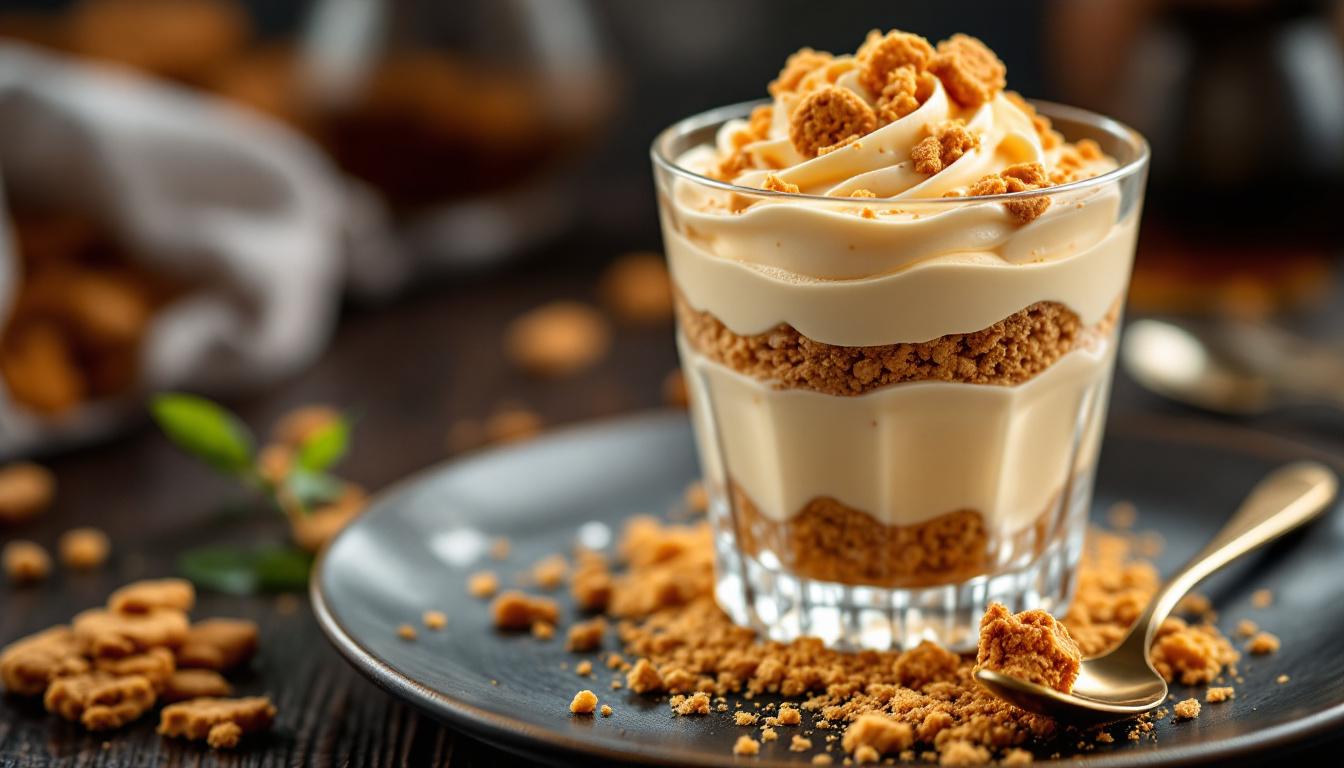The first time I tasted authentic vanilla-speculoos cream pots, I was standing in a tiny Belgian kitchen watching my mentor’s grandmother work her magic. The fragrant aroma of warm spices melded with rich vanilla in a way that transported everyone to a place of pure comfort. What surprised me most wasn’t the simplicity of ingredients, but how the humble speculoos cookies—those spiced biscuits that often accompany coffee—could transform into something so extraordinary when paired with silky vanilla cream. Years later, I’ve perfected my own version that honors tradition while adding professional touches anyone can master at home.
The Story
This Franco-Belgian dessert marries two distinct culinary traditions: the classic French vanilla crème pâtissière and Belgium’s beloved speculoos cookies. What began as a creative use for leftover biscuits evolved into a cherished dessert found in homes throughout the region. The beauty lies in its unpretentious elegance—a dessert that doesn’t require fancy equipment yet delivers restaurant-worthy results. The contrast between the silky-smooth vanilla cream and the warming spices of cinnamon, ginger, and nutmeg creates a perfect harmony that’s greater than the sum of its parts.
Ingredients Spotlight
For 4-6 individual servings:
• 2/3 cup (165ml) whole milk
• 2/3 cup (165ml) light cream
• 2 large egg yolks
• 2 tablespoons (30g) granulated sugar
• 4 teaspoons (20g) vanilla sugar (or 1 teaspoon vanilla extract plus 1 tablespoon sugar)
• 2 teaspoons (6g) cornstarch
• 1/3-1/2 cup (40-50g) speculoos cookies
• Optional: pinch of cinnamon or speculoos spice blend
Step-by-Step Guide
1. Prepare the vanilla cream base: In a saucepan, combine milk and cream, then heat until just below simmering (around 180°F/82°C). You’ll see tiny bubbles forming around the edges—that’s your cue.
2. Create the custard mixture: In a separate bowl, whisk egg yolks with both sugars until pale and slightly fluffy (about 2 minutes). The color transformation from deep yellow to light custard is your visual indicator of proper aeration.
3. Incorporate the cornstarch: Whisk the cornstarch into the egg mixture until completely smooth. This prevents any lumps from forming later—a step many home cooks skip but is essential for that perfect silky texture.
4. Master the tempering technique: Gradually pour about 1/3 of the hot milk mixture into the egg mixture in a thin stream while whisking constantly. This slowly raises the temperature of the eggs without scrambling them—the most crucial technique in this entire recipe.
5. Cook to perfection: Return the tempered mixture to the saucepan with the remaining milk and cook over medium-low heat (never high!), stirring constantly with a wooden spoon or heat-resistant spatula. The cream is ready when it coats the back of a spoon and holds a clean line when you run your finger through it (around 5-7 minutes at 170-175°F/77-79°C).
6. Cool strategically: Remove from heat and let cool slightly, stirring occasionally to release heat. To prevent a skin from forming, place plastic wrap directly on the surface of the cream.
7. Prepare the speculoos layer: While the cream cools, finely crush the speculoos cookies in a food processor or by placing them in a sealed bag and crushing with a rolling pin until they reach a fine, sandy texture.
8. Assemble: Divide the slightly cooled cream among serving glasses or ramekins. Top each with a generous layer of crushed speculoos. Alternatively, you can create layers by putting cookie crumbs first, then cream, then more crumbs on top.
9. Chill thoroughly: Refrigerate for at least 2 hours, preferably 3-4 hours, until completely set and chilled.
Expert Techniques
The secret to a professional-quality cream lies in controlling temperature and texture. When cooking the custard, use the “figure-eight” stirring pattern, continuously scraping the bottom of the pan to prevent scorching. Watch for the precise moment when the cream thickens—it happens quickly, often within 15-30 seconds of reaching the right temperature.
Chef’s Note: When I’m making this for special occasions, I infuse the milk mixture with half a real vanilla bean (split and scraped) instead of extract. Remove the pod before tempering. The tiny black specks of vanilla seed elevate both the visual appeal and flavor complexity, creating that authentic “grandmother’s kitchen” quality that guests always notice.
For an elegant twist inspired by French techniques, try infusing the milk with lavender before making the cream, creating a floral note that pairs beautifully with the spiced cookies.
Presentation & Pairing Ideas
Serve these cream pots in clear glasses to showcase the beautiful contrast between the golden cream and the dark cookie layer. For an elevated finish, add a whole speculoos cookie standing upright as a garnish, or a light dusting of cookie crumbs just before serving to maintain textural contrast.
This dessert pairs magnificently with a sweet wine like Moscato d’Asti or even a coffee alongside a chocolate fondant for a decadent dessert course. For a full sensory experience, consider serving after a main course of duck confit, where the richness of the duck is beautifully balanced by the sweet, spiced finish of this dessert.
For a lighter variation, replace half the cream with milk and increase the cornstarch to 8g. Vegans can adapt by using plant-based milks and cream with a modified cornstarch ratio, though the texture will differ slightly from the classic version.
Remember, cooking is about making something your own. Whether you follow this recipe exactly or use it as inspiration for your own creation, the most important ingredient is the joy that comes from creating something delicious with your own hands. Next time, try experimenting with different cookies—perhaps almond biscuits to complement a chiboust cream or even a savory-sweet variation using the principles of Basque cuisine. The possibilities are endless when you understand the fundamentals.
